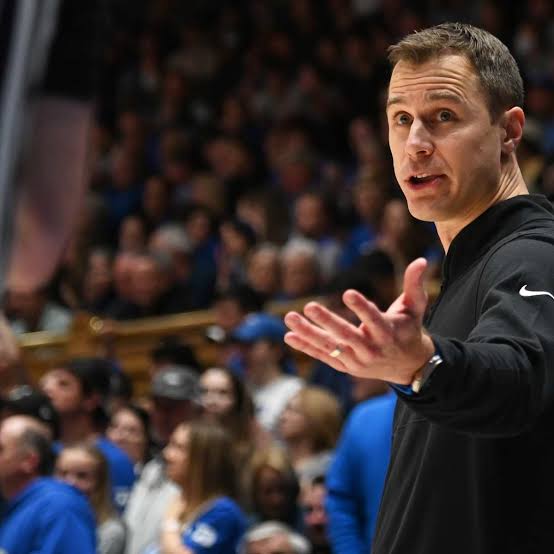Duke basketball, one of the sport’s most storied programs, has long been synonymous with success, legendary coaches, and elite recruits. However, in recent years, the college basketball landscape has undergone a seismic shift, with the transfer portal playing a larger and larger role in shaping teams’ rosters. This year, Duke has made a big splash in the portal, acquiring several key players to complement their already talented lineup. But does this revamped roster signal the beginning of a new era of dominance for the Blue Devils, or could it be a recipe for disaster?
The Transfer Portal Revolution
The NCAA’s introduction of the transfer portal has changed the way teams build their rosters. Players now have more freedom than ever before to leave programs and find a better fit for their style of play or career aspirations. For top-tier programs like Duke, the portal offers an opportunity to instantly add high-level talent, often from established programs with proven success at the collegiate level.
Duke’s transfer portal success has been widely lauded. The Blue Devils have secured a handful of immediate contributors who bring valuable experience and skill sets to the team. However, while it’s easy to be excited about the potential of these transfers, it’s crucial to evaluate how these new additions will fit into the team’s existing structure.
The Case for Duke’s Best Ever Roster
On paper, this year’s Duke roster is undeniably loaded. The Blue Devils have brought in a collection of transfers who have proven they can compete at a high level. These players bring a range of attributes to the table: scoring ability, leadership, and defense, to name a few. When combined with a solid core of returning players and a few elite freshmen, the roster is one that could contend for a national championship.
One of the key transfers, for example, could be an immediate impact player in the post or on the wing, giving Duke the versatility to match up with virtually any opponent. This added depth could give Coach Jon Scheyer more flexibility in his rotations and strategy, making the Blue Devils an even more formidable force. And, given the program’s reputation for developing talent, there’s a belief that these transfers will quickly adapt to Duke’s high-pressure system.
In addition to the transfer portal success, Duke’s long-term future also looks exceptionally bright thanks to its 2025 recruiting class. The Blue Devils have already secured commitments from several elite prospects:
Cameron Boozer, a 6-9, 235-pound power forward ranked No. 2 overall in the 2025 class, is widely considered one of the most versatile and NBA-ready high school players in the country.
Cayden Boozer, his twin brother, is a 6-4 point guard with a five-star rating who brings vision, control, and maturity to the backcourt.
Nikolas Khamenia, a 6-8 small forward and gold medalist with USA Basketball, adds length, athleticism, and a winning pedigree.
Shelton Henderson, also committed, rounds out the 2025 class with more athleticism and upside.
Braydon Hawthorne, a 6-8 forward currently visiting Duke, could also join this group, adding further depth and promise.
This combination of short-term strength from transfers and long-term potential from elite recruits positions Duke for sustained success well beyond the upcoming season.
The Risk of Disastrous Chemistry
However, the flip side of the transfer portal is its potential to disrupt team chemistry. College basketball is a sport that thrives on cohesion and team dynamics. With so many new faces entering the locker room, the question arises: can these transfers mesh with the established players? After all, Duke’s success over the years hasn’t just been about individual talent; it’s been about the ability to form a unified team under pressure.
There is always a risk that integrating so many transfers into the mix could lead to friction. Players who have spent years in other systems may struggle to adapt to Duke’s unique style of play, and the veteran players who have already established themselves at the school might feel threatened or sidelined by the influx of new talent. With so many high-profile players trying to make a name for themselves, it could lead to clashing egos or a lack of chemistry that prevents the team from playing at its highest level.
Additionally, the transfer portal players could come with different expectations or motivations. Some may see Duke as a stepping stone to the NBA, which could lead to a lack of commitment to the team’s long-term success. If these players are primarily focused on their own development rather than the program’s collective goals, it could cause problems in terms of focus and team culture.
The Verdict: High Ceiling, But Cautiously Optimistic
At the end of the day, Duke’s post-transfer portal roster is undeniably impressive. The talent is there, and the potential for greatness is sky-high. However, whether this is Duke’s best-ever roster or a recipe for disaster largely depends on how well the transfers integrate into the team dynamic and how effectively Coach Scheyer can manage the personalities and egos on the roster.
If everything falls into place—if the transfers adjust to the system, if the veterans continue to lead, and if the team can develop strong on-court chemistry—then Duke could indeed be poised for a championship run. But if the integration proves difficult, if the roster fails to gel, or if the transfers don’t live up to expectations, this could be a year of disappointment for the Blue Devils.
In the ever-evolving landscape of college basketball, the transfer portal will continue to play an integral role in shaping the future of programs like Duke. It’s clear that the Blue Devils are taking full advantage of the portal’s power while continuing to secure elite high school talent. Only time will tell if this strategy will lead to greatness or disaster. For now, all eyes are on Coach Jon Scheyer, his talented roster, and the next generation of Blue Devils preparing to make their mark in Durham.

